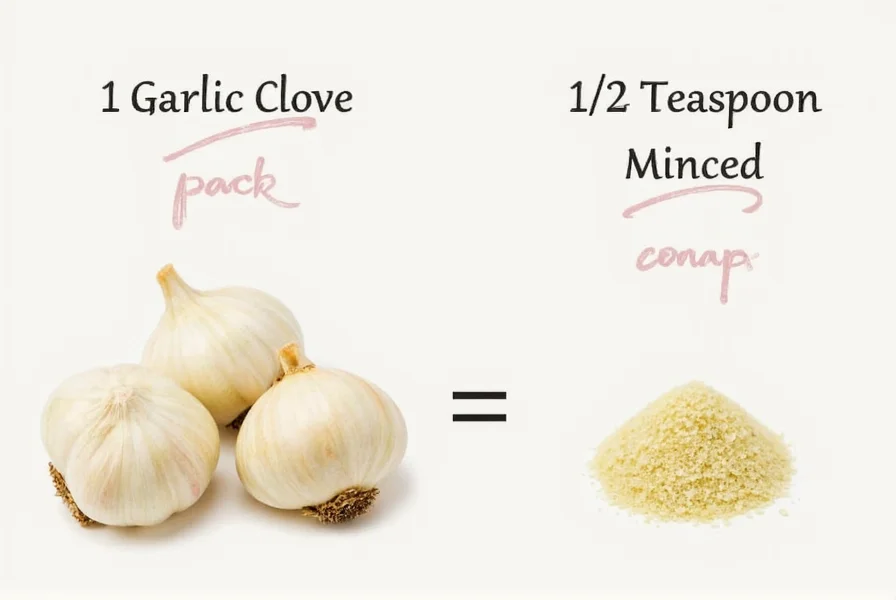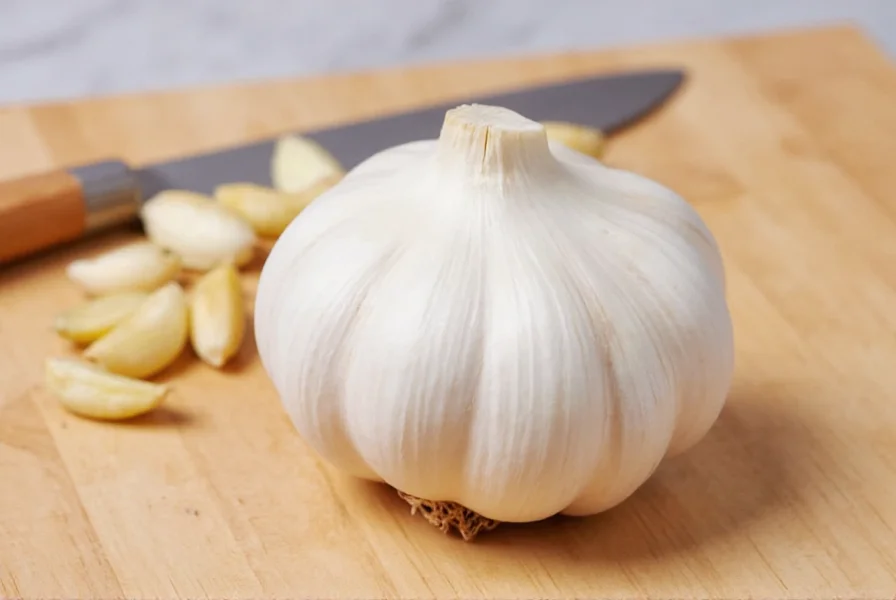When following recipes that specify garlic measurements in teaspoons rather than cloves, many home cooks face confusion. This practical guide provides accurate conversions and helpful context for working with fresh garlic in your cooking.
Understanding Garlic Clove Measurements
Garlic cloves vary dramatically in size, which directly impacts their volume when minced. A single head of garlic typically contains 10-12 cloves of different sizes. The measurement conversion depends on several factors including the garlic variety, growing conditions, and whether you're measuring chopped or finely minced garlic.
| Garlic Clove Size | Minced Garlic Yield | Chopped Garlic Yield |
|---|---|---|
| Small (1 inch long) | 1/4 teaspoon | 1/2 teaspoon |
| Medium (1.5 inches long) | 1/2 teaspoon | 1 teaspoon |
| Large (2 inches long) | 1 teaspoon | 2 teaspoons |
Practical Measurement Tips for Cooking
When precision matters in your recipes, consider these practical approaches to garlic measurement:
- For baking and delicate sauces: Use a microplane grater for the most consistent measurement—1 medium clove equals approximately 1/2 teaspoon
- For heartier dishes: Rough chopping provides more texture but requires adjusting measurements—1 medium clove yields about 1 teaspoon when coarsely chopped
- When substituting garlic powder: Remember that 1/8 teaspoon garlic powder equals one medium fresh clove

Garlic Substitution Guide
Understanding how to convert between different garlic forms ensures recipe success when fresh garlic isn't available:
- 1 fresh garlic clove = 1/2 teaspoon minced garlic = 1/8 teaspoon garlic powder
- 3 fresh cloves = 1 1/2 teaspoons minced garlic = 3/8 teaspoon garlic powder
- 6 fresh cloves = 1 tablespoon minced garlic = 3/4 teaspoon garlic powder
Keep in mind that garlic powder has approximately 3-4 times the potency of fresh garlic, so adjust accordingly when substituting. Jarred minced garlic contains preservatives that slightly alter flavor and potency—use 1/2 teaspoon jarred minced garlic per fresh clove for best results.
Factors Affecting Garlic Measurements
Several variables impact the precise conversion from whole cloves to teaspoons:
- Moisture content: Freshly harvested garlic contains more moisture than stored garlic, affecting volume
- Preparation method: Finely minced garlic packs more densely than roughly chopped pieces
- Age of garlic: Older garlic dries out, reducing volume when minced
- Garlic variety: Softneck varieties typically have smaller cloves than hardneck varieties

When Precision Matters Most
While approximate measurements work for most savory dishes, certain recipes require precise garlic measurements:
- Infused oils and vinegars: Too much garlic can create food safety concerns
- Baking recipes incorporating garlic, where chemical reactions matter
- Preserves and pickling solutions where acidity balance is critical
- Delicate sauces like aioli or mayonnaise-based dressings
For these applications, weighing your garlic provides the most accurate measurement—one medium garlic clove weighs approximately 3-7 grams depending on size.
Practical Kitchen Application
Most experienced cooks develop an intuitive sense for garlic measurements through practice. When a recipe calls for “3 cloves minced,” visualizing the equivalent volume helps maintain consistency. Remember that roasting garlic reduces its volume significantly while concentrating flavor—one roasted clove equals about 1/4 teaspoon of paste.
Understanding the garlic clove to teaspoon conversion ensures your dishes achieve the perfect balance of flavor without overwhelming other ingredients. Whether you're preparing a simple pasta sauce or an elaborate holiday meal, accurate garlic measurement contributes significantly to culinary success.










 浙公网安备
33010002000092号
浙公网安备
33010002000092号 浙B2-20120091-4
浙B2-20120091-4